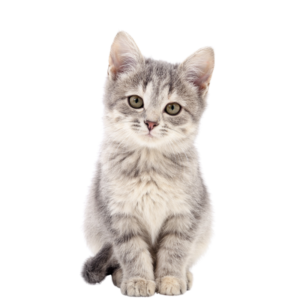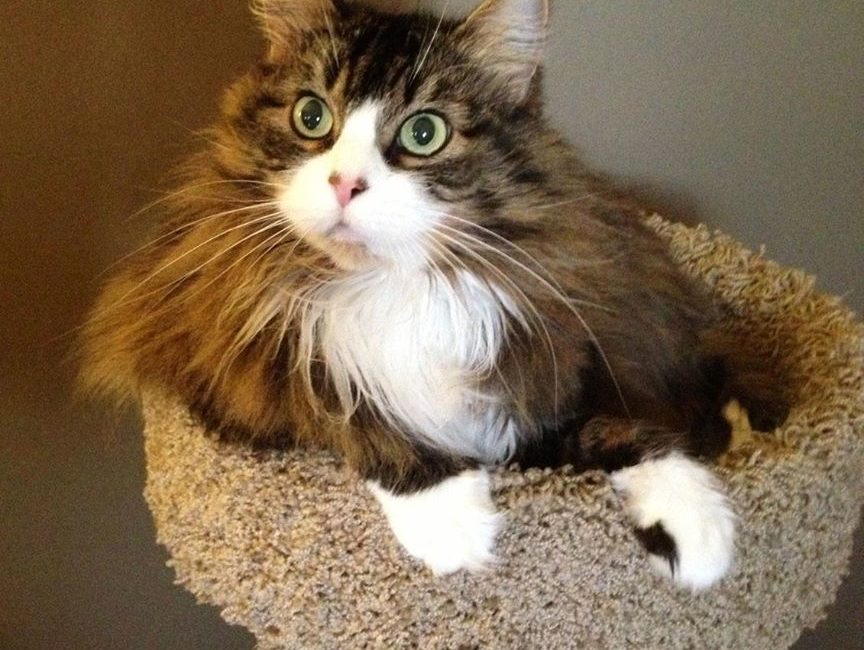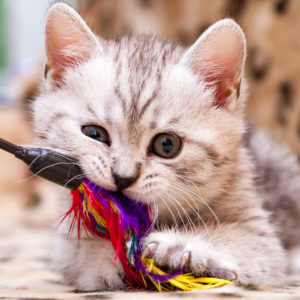What is diabetes?
Cells require energy in the form of sugar, more specifically, glucose. Insulin is produced by the pancreas in response to sugar being ingested and locks on to the glucose to deliver it to all the organs. Each organ has a lock, or insulin receptor, which the insulin “key” fits into and delivers the glucose to the cells. Diabetes develops when any part of this pathway is interrupted and glucose remains in the blood stream and is lost into the urine. In essence, the cells begin to starve. The cat will drink and urinate more, and will eventually start to lose weight.
In humans, we tend to refer to diabetes being type 1 (juvenile – where the pancreas no longer produces insulin) or type 2. Cats generally develop type 2 diabetes, where their pancreas is still producing some insulin in response to sugar in the blood, but it may be intermittent or the body is unable to recognize or utilize the insulin that is produced. The “key” no longer fits in the “lock”.
Who is at risk of developing diabetes?
Although cats can develop diabetes at any age and for many different reasons, there are some risk factors which can increase the likelihood of becoming diabetic. These include older age (commonly diagnosed between 6-8yrs old), obesity, physical inactivity, and male gender. Also, having prolonged steroid treatment can lead to diabetes, which is why it is important to follow veterinary prescriptions precisely and have annual lab work for your cat if they are on this type of medication.
How do we diagnose diabetes?
Cats who have symptoms such as weight loss, increased appetite, drinking and urinating more frequently or larger volumes plus mood swings may have diabetes. Routine blood tests can tell us if the blood glucose level is elevated. Since cats are prone to something called stress hyperglycemia (where their glucose levels spike in times of stress such as being at the vet clinic), we may need to rule out this spike by running a test for fructosamine level. Fructosamine allows us to determine what the glucose levels have been the past 2 weeks. Diabetic cats will also have glucose in their urine which can make them more prone to urinary tract infections.
What does this diagnosis mean for my pet?
Once diagnosed with diabetes, the goal is to find a suitable dose and type of insulin that can be supplemented to your cat on a twice daily basis to help regulate the blood glucose levels in a normal range. Diet is also very important in glucose regulation. Diabetic cats should be eating a low carbohydrate food and not be over fed. It is important to realize the amount of food going into the body is equal to the amount of glucose circulating in the blood stream, and the higher the glucose, the higher the amount of insulin will be needed. By measuring the amount of food your cat will be receiving, it will be a lot easier to regulate.
It takes a tremendous amount of dedication and organization to get used to giving your cat insulin injections, regulating the diet and doing regular blood glucose measurements at home – but once you get into the swing of it, the results are very rewarding. If caught early enough and managed aggressively, some cats even go into remission where their insulin needs decrease or subside completely. Remission can last months to years. A well-managed diabetic cat can live a long happy, comfortable fulfilled life.




